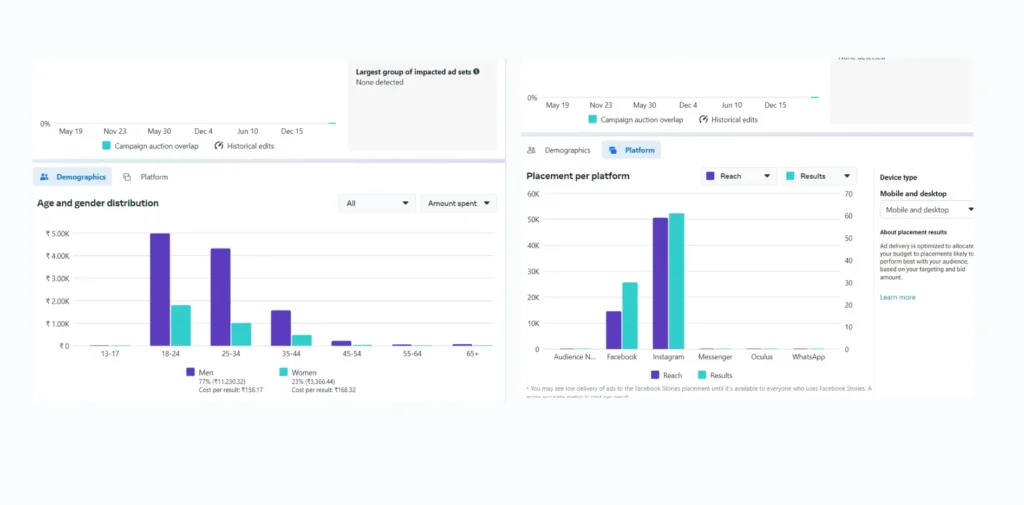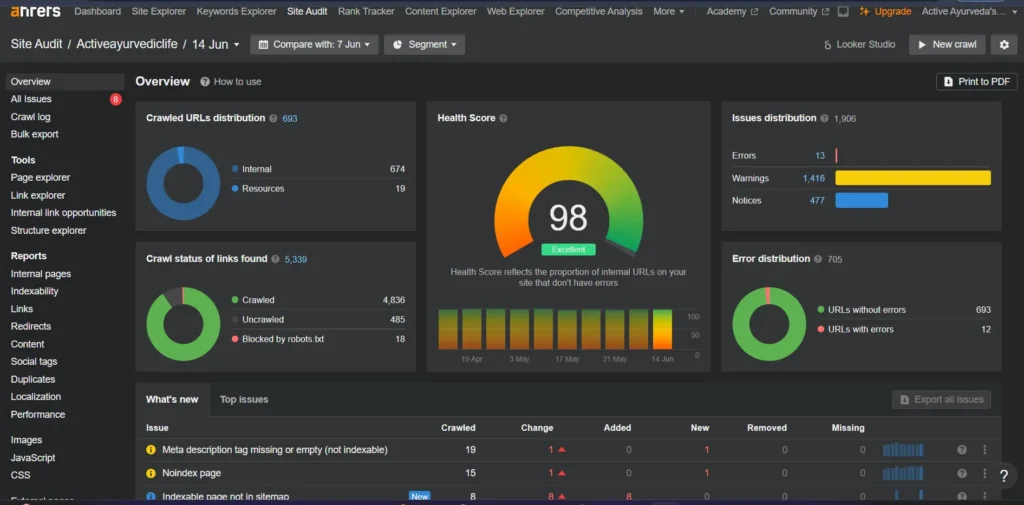Social Media For Ecommerce
Approximately 3.81 billion people worldwide use social media,
often on multiple platforms.
As they use social media daily, it makes sense to market to them there.
When social media first appeared, it was meant for people to connect with each other. As these platforms grew, businesses realized they could use them to reach customers in new ways.
Today, it’s hard to imagine a new business starting without being on social media.
but still, many business owners and marketers don’t understand exactly how to use social media for ecommerce.
and if you are one of them, we are here to help you!
Let’s get started!
1. What is Ecommerce for Social Media
Social media ecommerce is when businesses use social media to promote and sell their products.
This involves making people aware of the brand, getting more followers, attracting new customers, and boosting sales.
For example, while scrolling through your Instagram feed, you might see a post from a brand showcasing a new pair of shoes.
2. Benefits of Social Media Marketing for Your E-commerce Business
Social media marketing has many advantages, making it a great tool for promoting an e-commerce website.
Increases Brand Awareness: Social media helps more people know about your business. The more people see your posts, the more they recognize your brand.
Website Traffic: Sharing links to your products and blog posts on social media can drive more visitors to your online store.
Promotes Customer Reviews: Happy customers can share their positive experiences, which can attract new buyers.
Impact Buying Decisions:- How your customers interact with your account on social media can play a factor in their buying choices.
Showcases Products: You can use photos and videos to show off your products in action, helping customers see their benefits.
Drop a hint about our upcoming store addition and get everyone excited!
3. Strategies for Marketing eCommerce Businesses on Social Media.
(a). Set Clear Objective for Your Online Store:-
[row_inner_3] [col_inner_3 span__sm=”12″]Setting a clear goal for your online store is super important. It’s like having a roadmap for your journey.
But what kind of goals should you set?
- Sell more on social media
- Get more visitors to your online store
- Get more customer questions/queries
- Make buying easier
- and similar others could be your goal
but the main thing to decide is whether you want to sell directly on social media, use social platforms for your online store, or market your products through social media.
[/col_inner_3] [/row_inner_3](b) Define the best social media platforms for your ecommerce:-
[row_inner_3] [col_inner_3 span__sm=”12″]Choosing the right social media platforms for your online store can make or break your business.
Do you have any idea where your customers spend their time online?
and who your target customers are because it directly impacts how well you can reach and engage your target audience.
For example, if you’re targeting Gen Z, they usually hang out on TikTok and Instagram. Millennials, on the other hand, are more into Facebook and Twitter.
If your audience is mostly women, Pinterest is a great choice since about 60% of its users are women.
If your online store sells professional services or B2B products, there is no doubt that LinkedIn is perfect.
so think carefully and Choose wisely to maximize your reach and engagement.
[/col_inner_3] [/row_inner_3]
(c) Optimize Your Social Media Channels for E-Commerce
so, since you’ve chosen the platforms, it’s time to optimize that
Make sure
- your product descriptions are clear and informative.
- Use high-quality images that showcase your products effectively.
- Respond promptly to comments and messages on social media.
- Display customer reviews and testimonials prominently.
- Use social media to share discounts and special promotions with your audience.
- Make sure your website is easy to use on mobile devices.

(d) Define Your Target Audience & create content accordingly:-
A successful social media strategy starts with understanding your customer entirely.
Imagine trying to sell something without knowing who you’re selling to—how can you expect to connect with them effectively?
some methods to know your audience
Surveys: Ask your customers questions about what they like and how they shop.
Talk to Customers: Have conversations to learn what they need and why they buy from you.
Check Out Competitors: See who they target and what works for them.
Website Data: Look at where your visitors come from and what they do on your site.
Social Media Analytics:- Use tools like Facebook insights, Instagram insights, Twitter analytics, and LinkedIn analytics to see who follows you and what they care about.
Here are some content creation tools:-
- Canva: Helps create graphics, posters, and social media visuals easily.
- Adobe Spark: Allows for quick creation of videos, graphics, and web pages.
- Grammarly: Helps improve writing by checking grammar, spelling, and style.
- Hootsuite: Manages and schedules social media posts across different platforms.
- Buffer: it schedules and analyzes social media content performance.
Here are some content ideation tools:-
- BuzzSumo: Helps find trending topics and content ideas based on social media shares.
- Google Trends: Shows what topics are trending in search queries over time.
- AnswerThePublic: Generates content ideas by aggregating questions people are asking online.
- MindMeister: A mind-mapping tool to visually organize and brainstorm ideas collaboratively.

(e) Engage influencers for collaboration:-
Did you Know?
That an impressive 72% of Gen Z and Millennials actively follow social media influencers?
That’s right.
and most businesses think using influencers on social media is great for letting more people know about their brand.
It has become hugely popular online, giving ecommerce brands like yours a great chance to genuinely connect with your target audience.
Here’s how you can use influencer marketing in your ecommerce marketing plan:-
Finding the Right Influencers: Identify social media personalities who resonate with your target customers
.Set clear goals for your influencer campaign to help you plan it effectively.
Collaborating with Influencers: Work with influencers to showcase your products authentically on platforms like Instagram or YouTube.
Measuring Success:
Track the performance of influencer campaigns to improve your future marketing strategies.

(f) paid social media campaigns for ecommerce.
Did you know that over 70% of people say they have bought something because of a social media post they saw?
It’s amazing how much influence these platforms have on our purchasing decisions!
Nowadays, paid social media advertising is available on almost every platform. It’s really helpful for businesses because it lets them promote their products to a specific group of people.
Each platform has tools that help you target the right audience based on age, location, and interests.
Here are five of the best platforms for advertising:-
and some advertising methods:-
- Instagram Stories.
- Instagram feed ads
- YouTube in-stream ads
- TikTok ads

(g) Use Automation tools
Automation tools are helpful if you use social media to sell your products.
Here’s why:
On social media, people expect quick responses that feel personal. Automation helps you meet these expectations.
Imagine if you had to be online all the time, answering every comment and question.
It’s just not possible!
Social media is like a shop open 24/7, even on holidays. So, using automation tools ensures you don’t miss important messages or upset customers.
(h) Make Payment Options Easy for Customers
To succeed with your online store, you must offer reliable ways for customers to pay for your products.
Various payment options are available for ecommerce businesses, each with its own features and rules.
Examples include Square, Pay, Stripe, Apple Pay, and Google Pay.
Some social media platforms let customers buy directly through their apps if they set up certain features.
You can also use third-party websites to advertise and sell your products. These platforms can help expand your ecommerce business.

4. Monitor Daily Growth
Lastly, after setting up your social media for e-commerce, check regularly how well it’s working.
Use tools like Google Analytics or social media dashboards to see how many people are visiting your site or buying your products.

NOT SURE WHERE TO START?
Get a free social media channel audit.?



